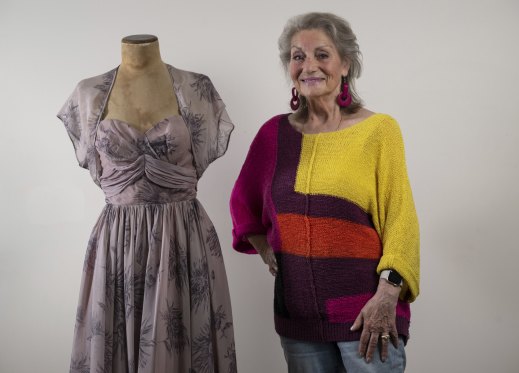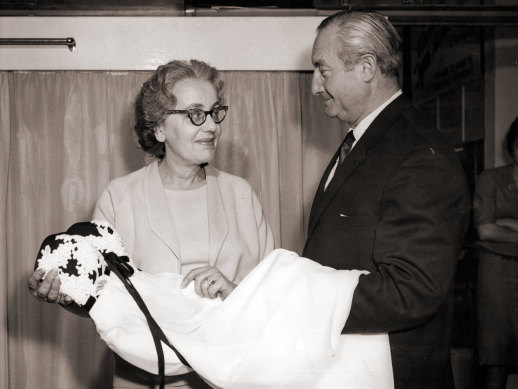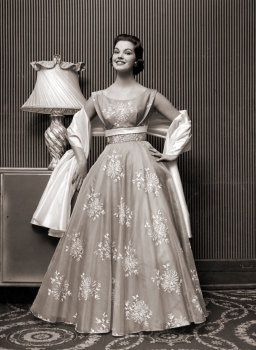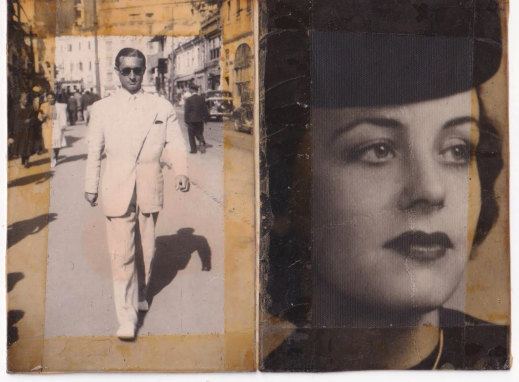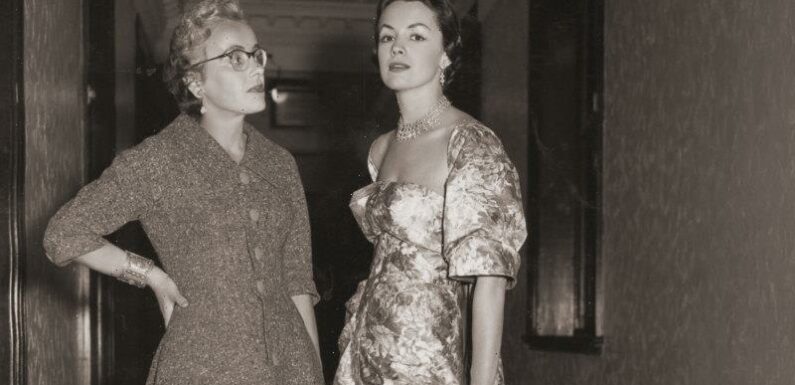
In the heyday of Melbourne fashion designer Charlotte Blau, her elegant gowns were sold in prestigious US stores such as Saks Fifth Avenue in New York.
In the 1950s and 1960s, her creations were prized by Melbourne’s society belles and captured by photographers like Helmut Newton and Athol Shmith.
Gina Goldsmith with one of her late mother Charlotte Blau’s dresses.Credit:Penny Stephens
Fashion historian Tom McEvoy said Blau, who died in 1996, deserves recognition as one of Australia’s top designers and her pieces should be held by the National Gallery of Victoria.
McEvoy called on those who own a Charlotte Blau piece to come forward. He has seen just four since he started to document Australian fashion history six years ago.
In the late 1950s, Blau and her husband, Willy Blau, were running her fashion label, Charlotte Fifth Avenue Gown, from their factory in Oliver Lane, in Melbourne’s Flinders Lane fashion district.
They employed 26 machinists, 14 finishers, two pressers and two in dispatch, and they sold pieces to Georges and Myer department stores and boutiques.
Charlotte Blau and husband Willy Blau in the 1960s.Credit:Gina Goldsmith private collection
A few years earlier, fire had destroyed the German immigrant’s first collection on the eve of its launch, to be held at Menzies Hotel, when, in exhaustion, Blau left the iron on at home in Heidelberg.
Blau started again, and in 1954, Charlotte Fifth Avenue Gowns was launched. Within a few years, her husband had sold pieces to US stores such as Bullocks Wilshire in Los Angeles, where her dresses were displayed in all six windows.
A Charlotte Fifth Avenue Gowns piece.Credit:Gina Goldsmith private collection
Blau, born in Hamburg, Germany, in 1916, had studied as an architect at Bauhaus, a famous avant-garde art school in Weimar, which the Nazis called degenerate and shut down in 1933.
She was an anti-Nazi activist and in 1939, fled to Turkey, where her architect firm had an office.
In 1942 in Istanbul, she met Willy Blau, who was from a Polish Orthodox Jewish family. He was an interpreter for the British government.
The couple moved to Palestine and, in 1946, migrated to Australia, settling in St Kilda and then Heidelberg.
Charlotte’s architecture degree was not recognised, so she started dressmaking, and demand grew until she opened her own business.
McEvoy said buyers loved Blau’s unique style, from her architectural sense of structure and applique flowers to the use of lace in whole garments. She won gown of the year in 1965.
Willy Blau and Charlotte Blau in Istanbul circa 1942.Credit:Gina Goldsmith private collection
Gina Goldsmith views her mother as on par with top French designers.
“There was no one to compare her with here. She never worked in cheap materials – she loved taffeta, shantung silk, chiffon and velvets. The lace was imported from Austria or Switzerland.”
Goldsmith, a former fashion designer who runs The Stables restaurant in Malmsbury, said her mother was an extraordinary woman. “She shouldn’t be forgotten.”
McEvoy is giving a talk on Blau on March 25 and 26 at the four-day Melbourne Fair of vintage furniture, art and couture at Caulfield Racecourse, where he will explain how Melbourne became known as the fashion capital and how Blau had a big role to play in that. He said her breakthrough into the US market was “incredible” in 1956.
He lamented that her dresses “aren’t even in the National Gallery of Victoria, and they absolutely should be. It’s a disappointment that one of our unique trailblazers with a compelling story isn’t represented. She was one of Australia’s best.”
The NGV confirmed it did not have any of Blau’s dresses.
McEvoy said anyone curious about a label’s history, not just Blau’s, can bring the garments to him at the fair to learn more.
Anyone with a Charlotte Fifth Avenue Gowns dress or with information should email [email protected].
Most Viewed in National
From our partners
Source: Read Full Article
